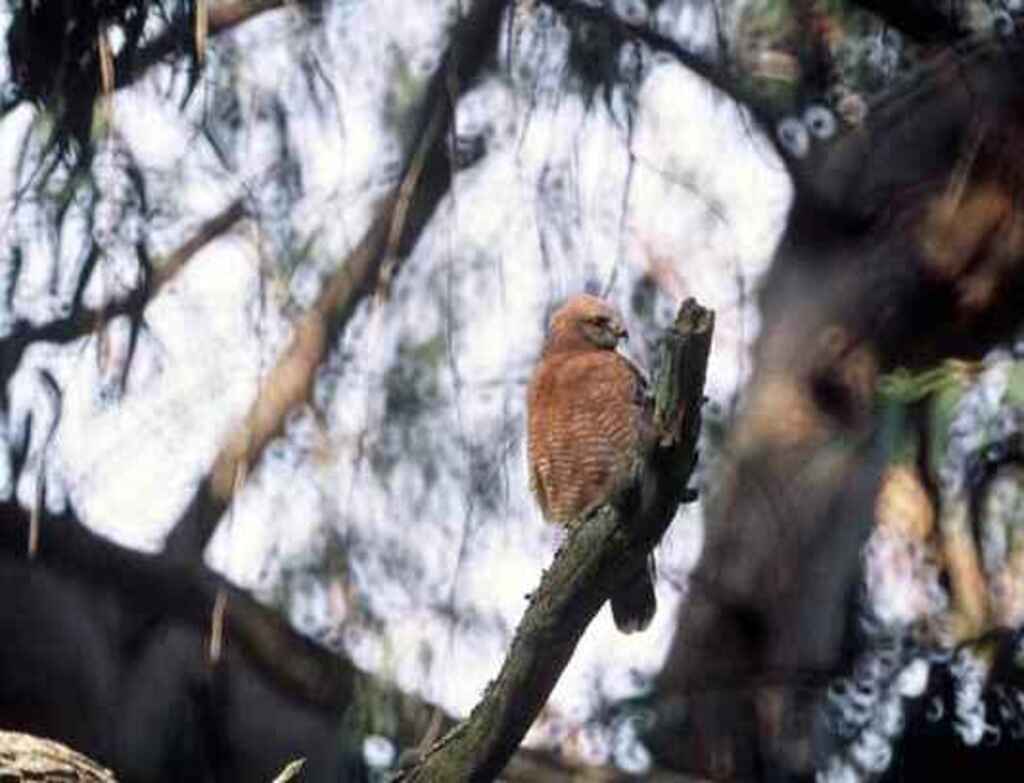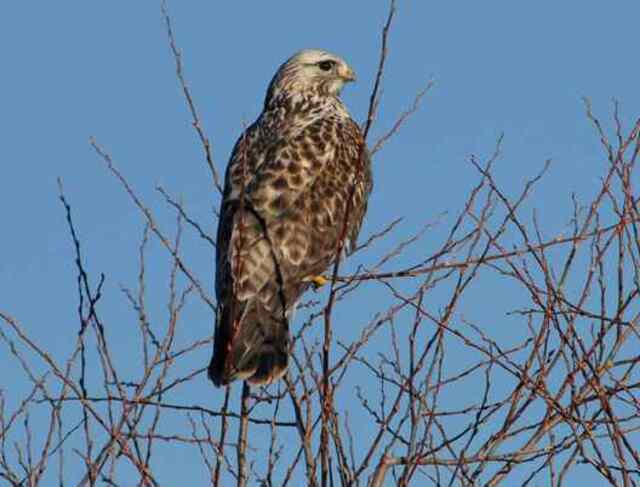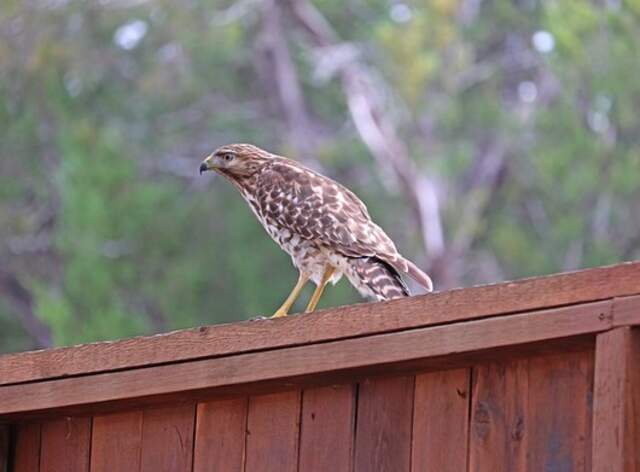Armadillos are fascinating creatures that have captured the curiosity of many individuals. These animals are known for their unique armor-like shells that protect them from predators.
However, despite their protective exterior, armadillos are still vulnerable to predators in their environment.
One such predator that has been questioned in regards to its diet is the hawk. Do hawks eat armadillos?
This question has caused controversy amongst individuals, and in this article, we will explore the answer to this question and provide an in-depth analysis of the relationship between hawks and armadillos.
Hawks are well-known for their predatory skills and are often seen soaring high in the sky, scanning the ground for potential prey.
They are known to prey on a diverse range of animals, including small mammals, birds, and reptiles. However, the question remains, do hawks target armadillos as part of their diet?
In this article, we will delve into the predatory relationship between hawks and armadillos, examining the potential benefits and challenges of a hawk consuming an armadillo.
Through this exploration, we hope to provide insight into the intricate web of relationships that exist within the natural world and the importance of understanding these relationships for the conservation of species.
Table of Contents
- 1 Key Takeaways
- 2 Do Hawks Eat Armadillos?
- 3 Overview of Armadillo Predators
- 4 Hawks and Their Prey
- 5 Armadillos and Their Defensive Mechanisms
- 6 Rare Cases of Hawks Hunting Armadillos
- 7 Challenges for Hawks in Hunting Armadillos
- 8 Potential Benefits of Hawks Eating Armadillos
- 9 Other Predators of Armadillos
- 10 Conservation Efforts for Armadillos
- 11 Conclusion
- 12 Frequently Asked Questions
- 12.1 What other types of prey do hawks typically hunt?
- 12.2 Do all species of hawks hunt armadillos, or are there specific types that are more likely to do so?
- 12.3 Are armadillos considered endangered or threatened species?
- 12.4 What other animals in the armadillo’s ecosystem might be affected if hawks were to begin hunting them more frequently?
- 12.5 How do armadillos defend themselves against predators besides rolling into a ball?
- 13 Author
Key Takeaways
- Hawks have adapted to become more efficient hunters of armadillos, making them a common predator.
- Loss of predators can lead to overabundance of armadillos causing damage to vegetation.
- Armadillos are facing threats from habitat loss, hunting, and road accidents.
- Collaborative efforts involving various stakeholders are necessary for effective conservation strategies to protect armadillos and their habitats.
Do Hawks Eat Armadillos?
No, hawks do not typically eat armadillos. Hawks are carnivorous birds of prey that primarily feed on smaller animals like rodents, birds, and reptiles.
Armadillos, with their tough armored shells and burrowing behavior, are not common prey for hawks. Hawks prefer prey that is easier to catch and consume.
Overview of Armadillo Predators
Armadillos, like many animals, face numerous predators in their natural habitat. Among the most common predators are coyotes, foxes, and bobcats.
These predators are known to hunt armadillos for food and can be found in various regions where armadillos are present.
Despite their armored exterior, armadillos are not entirely immune to these predators, and their population can be impacted by the presence of these predators.
Coyotes
Coyotes have been observed preying on a variety of small mammals and reptiles, including armadillos, which may have a significant impact on local populations.
Coyote behavior is opportunistic, and they will hunt whatever prey is available, making the armadillo an easy target due to its slow speed and lack of defensive mechanisms.
Habitat destruction caused by human activities has pushed coyotes into urban areas, increasing their encounters with armadillos.
In these areas, coyotes will often hunt during the day, which is unusual behavior for them. Coyotes have been known to chase armadillos into the road, leading to collisions with vehicles.
The sight of a coyote chasing an armadillo through the streets of a city is a common image, highlighting the impact of habitat destruction on wildlife behavior.
As coyotes continue to adapt to changing environments, their impact on armadillo populations will remain a concern.
Moving forward, it will be essential to understand how habitat loss and coyote behavior may affect not only armadillos but other small mammals and reptiles as well.
This understanding will help us identify strategies for conservation and management.
Foxes, on the other hand, have a distinct hunting style compared to coyotes and are known to prey on different types of prey.
Foxes
With their sleek bodies and bushy tails, foxes are often seen darting through the underbrush in search of prey.
These cunning animals are known for their hunting habits, which include stalking their prey and pouncing on them with deadly precision.
Foxes are opportunistic predators, meaning that they will eat whatever is available to them. They have a varied diet that includes small mammals, birds, insects, and even fruits and vegetables.
One interesting fact about foxes is that they are known to prey on armadillos, which are often found in underground dens.
Foxes are able to locate these dens by their strong sense of smell and will dig them up to get to their prey.
This behavior can be detrimental to the armadillo population, as foxes are known to be efficient predators.
Overall, foxes are fascinating creatures with unique hunting habits that contribute to their successful survival in the wild.
Speaking of predators, let’s now turn our attention to the next topic of bobcats.
Bobcats
Bobcats are elusive and highly adaptable predators, capable of thriving in a variety of habitats. They are known for their solitary behavior, with the exception of breeding season, where they may form temporary pairs.
Bobcats are opportunistic hunters, and their diet consists of small mammals, birds, reptiles, and even insects.
They use their keen senses and stealth to stalk their prey, often pouncing from a hidden location to catch it by surprise.
Their hunting patterns vary depending on their location and the availability of prey, but they have been observed to hunt during both day and night.
In some areas, bobcats have also been known to scavenge for food.
Overall, bobcats play an important role in maintaining ecological balance and are a fascinating species to study.
Moving on to another predator, hawks and their prey have an interesting relationship.
Hawks and Their Prey
Hawks are known for their exceptional hunting skills and have a diverse range of prey.
Typical prey for hawks include small mammals, birds, reptiles, and insects.
Hawks use a variety of hunting techniques such as soaring, hovering, and diving to catch their prey.
Typical Prey for Hawks
Interestingly enough, the typical prey for hawks consists of small mammals, birds, and reptiles, but not armadillos.
Common hawk species, such as red-tailed hawks and Cooper’s hawks, have been observed hunting rodents, rabbits, and squirrels.
However, the prey preferences of hawks can vary depending on their habitat. For example, hawks that live near bodies of water may hunt fish while those in open fields may hunt snakes or lizards.
The impact of habitat on hawk hunting behavior highlights the adaptability of these birds of prey.
Despite their varied prey preferences, hawks are known for their hunting techniques, such as stalking and diving, which allow them to catch their prey with precision and speed.
These techniques will be explored further in the subsequent section about hunting techniques.
Hunting Techniques
Hawks are skilled hunters that typically prey on rodents, small birds, and reptiles. To catch their prey, they use a variety of hunting strategies and adaptations.
For example, hawks have sharp talons and beaks that allow them to grab and kill their prey quickly. They also have excellent eyesight and can spot their prey from high up in the sky.
Hawks often use surprise attacks to catch their prey off guard, swooping down from above to seize them.
Additionally, some hawks hunt in pairs or groups, which allows them to take down larger prey or to distract and confuse their targets.
Overall, hawks are formidable hunters that have adapted to a wide range of environments and prey species.
In the next section, we will explore the defensive mechanisms that armadillos use to protect themselves from predators.
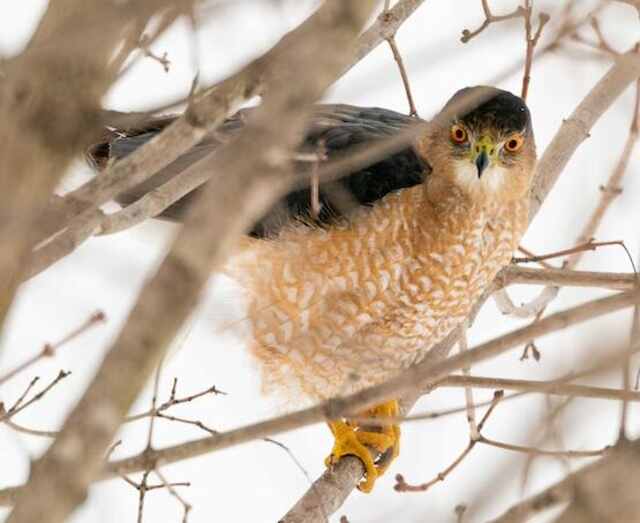
Armadillos and Their Defensive Mechanisms
Armadillos are fascinating creatures with unique defensive mechanisms. One of their most notable features is their armored skin, which protects them from predators like hawks.
In addition to their protective skin, armadillos are also known for their ability to dig burrows, which they use for shelter and protection.
Finally, their nocturnal habits allow them to avoid predators during the day and hunt for food at night.
Armored Skin
The armadillo’s armored skin is composed of bony plates covered in tough, leathery skin. This defensive adaptation provides protection against predators, including hawks that may try to prey on them.
The ecological impact of the armadillo’s armored skin is significant, as it allows them to thrive in environments where they may face threats from larger animals.
The bony plates are connected by flexible bands, which allow the armadillo to move and dig for food.
The tough skin covering the plates is also useful when digging burrows, which the armadillo uses for shelter and protection.
Despite this protection, however, armadillos are not completely invulnerable, and predators such as coyotes and bobcats have been known to attack and kill them.
Digging Burrows
Burrows are an important adaptation for the armadillo, providing not only shelter and protection, but also a secure place to raise young and maintain body temperature.
Armadillos are known for their ability to dig complex burrows, which can be up to 15 feet in length and 8 feet in depth.
These burrows offer many benefits for the armadillo, such as protection from predators, extreme temperatures, and other environmental factors.
Additionally, the burrows provide a habitat for many other species of animals, such as snakes, rodents, and insects.
Armadillos usually construct their burrows in areas with loose soil or sand, such as grasslands, forests, and deserts.
They prefer to dig in areas with a good source of food and water, which allows them to remain close to their food sources and maintain a stable environment in their burrows.
As a result, burrowing is an important part of the armadillo’s habitat and way of life.
Moving on to their nocturnal habits, armadillos are mostly active at night, which allows them to avoid predators and hunt for food without being seen.
Nocturnal Habits
During the night, armadillos are able to carry out their activities without drawing the attention of potential predators.
Nocturnal foraging is one of their primary habits, as they use their keen sense of smell to locate food sources such as insects, snails, and small vertebrates.
Armadillos are known for their habitat preferences, as they prefer to live in areas with loose soil or sandy terrain, which allows them to easily dig burrows for shelter and protection.
However, despite their nocturnal habits and burrowing abilities, hawks have been known to occasionally hunt armadillos.
These instances are rare, as armadillos are not a typical prey item for hawks, but they do occur in certain circumstances.
Rare Cases of Hawks Hunting Armadillos
Occasionally, hawks have been observed preying on armadillos, a behavior that is not commonly seen. These rare sightings suggest that hawks may target armadillos as a potential food source in certain circumstances.
While the ecological impact of this behavior is not fully understood, it is possible that hawks could help to control armadillo populations in areas where they are considered pests.
However, there are several challenges for hawks in hunting armadillos, including their tough armor-like skin and the fact that armadillos are primarily nocturnal animals.
As such, it is likely that this behavior is a rare occurrence and not a significant part of the hawk’s diet.
Challenges for Hawks in Hunting Armadillos
The formidable armor-like skin of armadillos and their nocturnal habits pose significant challenges for hawks attempting to hunt them.
The hard shell covering the armadillo’s body serves as a shield against the hawk’s sharp talons and beak.
Moreover, armadillos are primarily active at night, which makes it difficult for hawks to locate and hunt them during the day.
To overcome these challenges, hawks have adapted to become more efficient hunters of armadillos.
Some species of hawks have developed powerful beaks that can crack open the armadillo’s shell, while others have learned to swoop down on armadillos from above, where the shell is less protected.
Despite these adaptations, hunting armadillos remains a challenging task for hawks. However, the potential benefits of hawks consuming armadillos make the effort worthwhile.
Potential Benefits of Hawks Eating Armadillos
Feasting on armored arthropods like armadillos can provide hawks with a plentiful protein source. This potential benefit of hawks eating armadillos is not only crucial for the bird’s survival, but it also has ecological implications.
Armadillos are known to dig up the soil, which can create new habitats for other animals.
By preying on armadillos, hawks can help keep their population in check, preventing overgrazing of vegetation and soil erosion.
Additionally, armadillos can carry diseases that can infect other wildlife, so by consuming them, hawks can help reduce the spread of these diseases.
Lastly, incorporating armadillos into their diet can also provide hawks with a variety of nutrients that they may not get from other prey sources.
However, it is important to note that these benefits are not exclusive to hawks, as other predators of armadillos may also reap similar advantages.
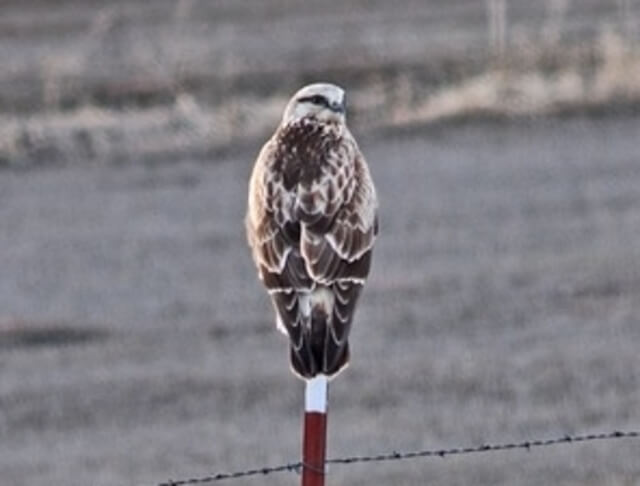
Other Predators of Armadillos
Various predators hunt armadillos as a primary or secondary food source, including coyotes, bobcats, foxes, and some species of snakes.
These predators have developed unique adaptations to capture armadillos, such as coyotes using their speed and endurance to chase down their prey, while bobcats rely on their stealth and agility to ambush them.
Snakes, on the other hand, use their venom and constricting abilities to subdue armadillos.
The ecological impact of armadillo predators can be significant, as they play a crucial role in regulating the population of these animals.
However, the loss of predators due to habitat destruction or hunting can lead to an overabundance of armadillos, causing damage to crops and other vegetation.
As such, conservation efforts for armadillos should also consider the preservation of their predator populations.
Conservation Efforts for Armadillos
Armadillos are facing various threats to their survival, including habitat loss, hunting, and road accidents. These factors have contributed to a decline in armadillo populations in various regions.
As a result, conservation efforts have been put in place to protect these animals, such as habitat restoration and protection, education programs, and regulation of hunting and trapping.
Threats to Armadillo Populations
The armadillo’s unique armor-like shell, which has evolved over millions of years to protect it from predators and the elements, may not be enough to shield it from the growing threats to its populations.
Human impact and habitat loss are the main culprits behind the decline of armadillo populations.
The expansion of human settlements and infrastructure development have resulted in the destruction of natural habitats, which in turn has fragmented populations and reduced their overall range.
Additionally, armadillos are often hunted for their meat and shells, which are used for various purposes.
Other threats to the armadillo include pollution, climate change, and disease. These factors, combined with their low reproductive rates, make them particularly vulnerable to population declines.
Conservation strategies aimed at protecting and restoring their natural habitats, as well as reducing human impact and hunting, are essential to ensuring the long-term survival of these unique animals.
Conservation Strategies
Conservation strategies aimed at preserving and restoring the natural habitats of armadillos, as well as reducing human impact and hunting practices, are crucial for the long-term survival of these vulnerable species.
Collaborative efforts, involving various stakeholders such as government agencies, non-profit organizations, and local communities, are necessary to ensure the implementation of effective conservation strategies.
Community involvement is also critical, as it can raise awareness and promote action towards protecting armadillos and their habitats.
To achieve this, education programs and outreach efforts can be implemented to inform people about the importance of armadillo conservation.
Additionally, research can be conducted to gain a better understanding of the ecology and behavior of armadillos, which can inform the development of targeted conservation strategies.
| Conservation Strategies | Armadillo Species | Outcome |
|---|---|---|
| Habitat Restoration | Nine-Banded Armadillo | Increased availability of suitable habitats |
| Population Monitoring | Giant Armadillo | Improved understanding of population dynamics |
| Wildlife Corridors | Southern Three-Banded Armadillo | Enhanced connectivity between fragmented habitats |
| Education and Awareness | Pink Fairy Armadillo | Increased public support and engagement in conservation efforts |
| Anti-Poaching Measures | Chacoan Naked-Tailed Armadillo | Reduction in illegal hunting and poaching incidents |
Overall, concerted efforts towards armadillo conservation can ensure the long-term survival of these unique and important species, while also promoting the preservation of natural habitats and biodiversity.
Conclusion
In conclusion, while there have been rare cases of hawks hunting armadillos, it is not a common occurrence.
Armadillos have developed unique defensive mechanisms, such as their tough, armored shell and ability to quickly burrow underground, that make them a difficult prey for many predators, including hawks.
However, if hawks were able to successfully hunt and consume armadillos, it could potentially benefit their populations by providing a new source of food.
Armadillos face a variety of predators in their natural habitats, including coyotes, bobcats, and snakes.
Conservation efforts for armadillos are important in maintaining their populations and protecting them from threats such as habitat loss and hunting.
By understanding the complex relationships between predators and prey, we can work towards preserving the delicate balance of ecosystems and ensuring the survival of all species.

Frequently Asked Questions
What other types of prey do hawks typically hunt?
Hawks exhibit diverse hunting behaviors and select prey based on various factors, including size, habitat, and availability. They may hunt small mammals, birds, reptiles, and insects. Prey selection is a complex process that involves both innate and learned behaviors.
Do all species of hawks hunt armadillos, or are there specific types that are more likely to do so?
Hawk behavior depends on the species and their habitat. While some hawks may hunt armadillos, it is not a common prey item. Understanding the specific habitat preferences of different hawk species can provide insight into their hunting patterns.
Are armadillos considered endangered or threatened species?
Armadillos are not currently considered endangered or threatened, but there are ongoing conservation efforts to protect them and their habitats. Hunting regulations vary by location and may impact armadillo populations.
What other animals in the armadillo’s ecosystem might be affected if hawks were to begin hunting them more frequently?
Hawks prey on armadillos, but if they begin hunting them more frequently, it could lead to habitat displacement and affect other animals in the armadillo’s ecosystem. This could disrupt the balance of the ecosystem and cause negative consequences for all species involved.
How do armadillos defend themselves against predators besides rolling into a ball?
Armadillos have developed adaptation strategies to defend themselves against predators. They rely on their sense of hearing and smell to detect danger, dig burrows to escape, and have tough skin and sharp claws for fighting back.

